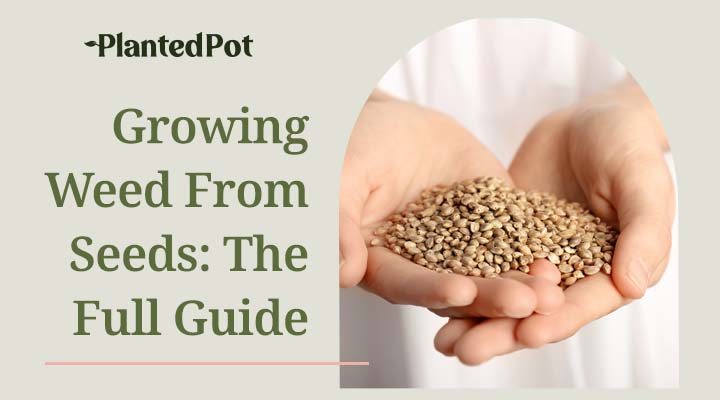
Pink Plants [Bring Natural Rosy Color to Your Home]
Home / Pink Plants [Bring Natural Rosy Color to Your Home]
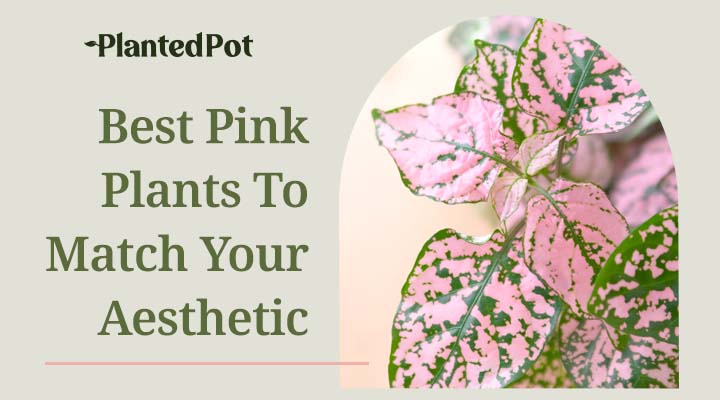
Pink Plants [Bring Natural Rosy Color to Your Home]
Pink is more than just a combination of red and white; it also represents compassion and, on a deeper level, also symbolizes the love of life. Nothing can embody those attributes more than pink plants. Pink houseplants are a great way to enhance your home’s appearance and provide a welcoming vibe.
Plants are not just limited to green; they can be various shades and hues of different colors. Whether pink is your favorite color or not, pink houseplants make a great addition for any plant parents. Read on further and learn more about pink plants, such as where they are found, why their leaves are pink, and more!
Are Pink Plants Real?
Pink plants are 100 percent real and come in different shapes, sizes, and patterns. Flowers are not the only vegetation capable of coming in different colors. Plants with pink foliage are available through different plant genera.
Each plant can have leaves with either splash of pink, pink veins, pink leaf outline, or completely pink. The leaves can be different shades of pink, ranging from salmon pink to coral pink.
Most of the plants with pink foliage are variegated versions of common indoor plants. Some of the houseplants with pink foliage are rare due to their high demand.
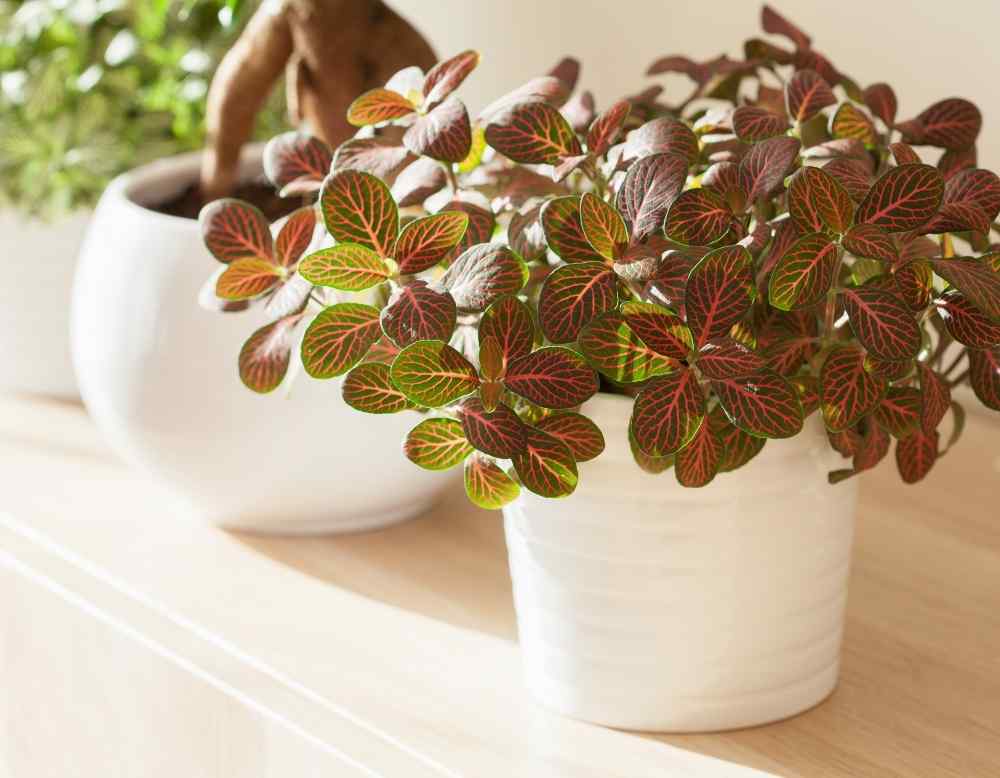
Why Do Some Plants Have Pink Leaves?
Plants with pink leaves are natural and do not harm the plant in any way. All plants contain a natural chemical compound that is responsible for color. Chlorophyll is a biomolecule that provides plants with green pigmentation and helps plants harvest sunlight into energy. Anthocyanidins are a series of phytochemicals that provide plants with colors ranging between blue, red, and purple hues.
These naturally occurring compounds are also known as flavonoids and are found in fruits and vegetables too. According to research, the amount of light, temperature, and pH level of water can determine the color. Red is from increased acidity, and vegetation with lower acidity increases the color blue.
Varigated plants with pink leaves can obtain their colors naturally or through human interference. Here are some of the reasons why pink houseplants exist.
- Mutation: Although highly uncommon, a plant can have a mutation in its genetic makeup. All plants produce chlorophyll, but sometimes a mutation can cause it to create fewer cells that make chlorophyll. This can lead to the plant displaying less green and more pink on its leaves.
- Natural Characteristic: Some plants contain color to attract animals like bees for pollination. The plant chemical compounds that create pink leaves also act as a natural sunblock for plants.
- Selective Breeding: When plant parents adopt an indoor plant that contains pink foliage, they propagate it or breed it to create more pink plants. These variegations require a little bit of skill. Sometimes, the pink-hued plants might revert to green, so plant owners trim the green leaves to keep the plant pink.
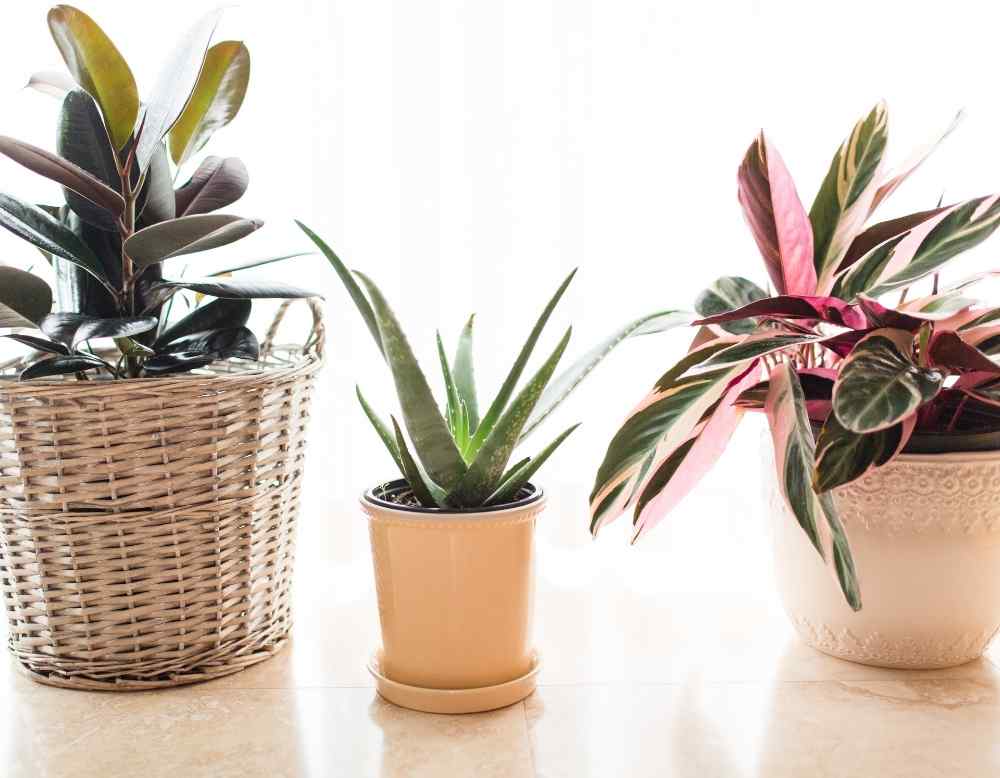
What Kind of Plants Have Pink Leaves?
There are countless plants with pink leaves, and some are more popular and rare than others. Here are some common houseplants that have pink leaves.
Nerve Plant (Fittonia Albivenis)
Also known as the mosaic plant because of the painted-net pattern on its leaves, this tropical flowering plant is native to the rainforests of South America. The deeply-veined leaves of the nerve plant are usually silver and white hues but can have pink veins.
These plants are highly regarded for their unique mosaic pattern leaves and do not take too much space. These pink houseplants can grow up to six inches tall. Here are a few tips to help you provide this plant with the best care.
- Light: Like all plants, light is essential for the nerve plant. This plant prefers bright indirect light to help maintain its pink color. Too much direct sunlight can damage the leaves.
- Water: The nerve plant is a thirsty plant that enjoys the water. Water this plant once or twice a week. It thrives in humidity, so misting it with a spray bottle helps it stay healthy.
- Temperature: Regular toom temperatures ranging between 65 to 80 degrees are sufficient for the nerve plant to thrive.
Polka Dot Plant (Hypoestes Phyllostachys)
The leaves of the Polka Dot Plant are slightly oval-shaped and have speckles of colors. It is native to the island of Madagascar and originally had pink dots scattered across its dark green leaves.
Variegated Polka Dot Plants are available in other colors besides pink, such as white, purple, and crimson red. The Pink Polka Dot Plant might be a small plant reaching one to two feet in height, but its colors are certainly eye-catching.
- Light: Used to growing under the shade of rainforest trees, the Polka Dot prefers partial indirect light to keep its pink, deeply veined leaves thriving.
- Water: This indoor plant prefers a moderate amount of water. Once half the soil is dry, give it some freshwater. Too much water can leave the soil soggy.
- Temperature: These plants can be kept outside as long as it is shaded from the sunlight, but should be brought indoors if the temperature at night drops below 50 degrees. Indoors, this plant enjoys a temperature ranging between 70 to 80 degrees Fahrenheit.
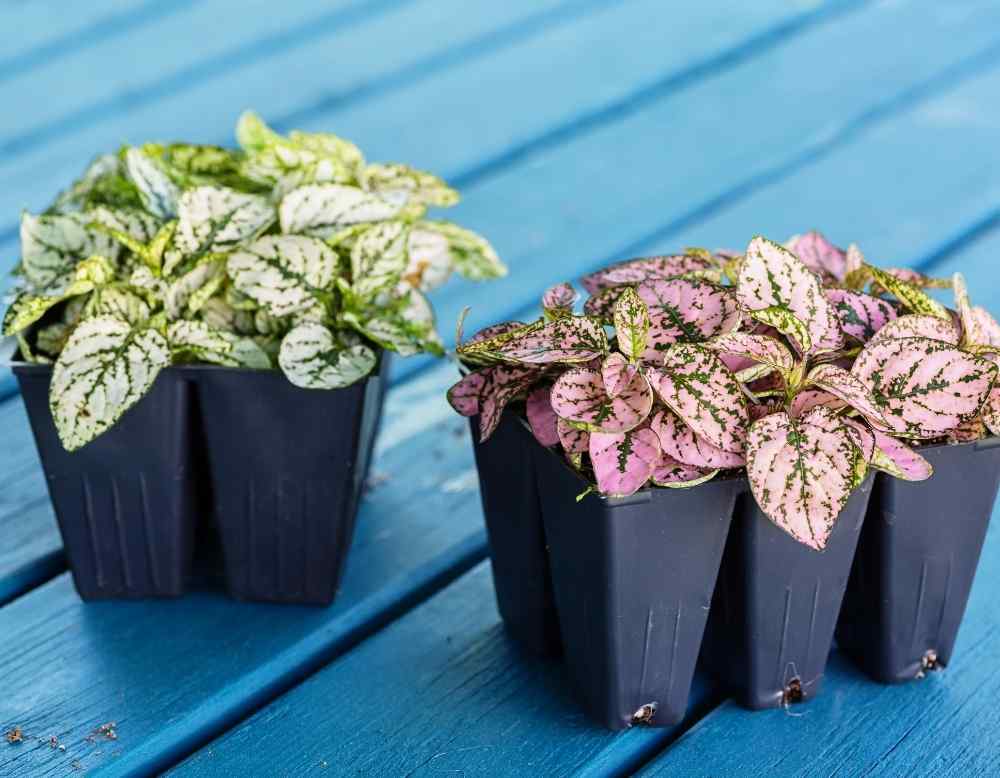
Pink Princess (Philodendron erubescens)
With a name like Princess, who would not want this plant as part of their collection? The leaves on this plant have a leather appearance and are usually green but can also have splashes of pink or fully pink-hued leaves. If you are shopping online for this plant, be careful not to purchase a fake.
- Light: One way to keep the pink and green leaves of this plant looking healthy at all times is by placing it somewhere with bright indirect light.
- Water: The Pink Princess enjoys being misted with water every few days to mimic the humid conditions of its natural habitat.
- Temperature: This plant enjoys temperatures ranging from 60 to 85 degrees Fahrenheit. Avoid placing it near AC units or heaters where hot, dry air can blow and potentially damage this plant.
Rubber Plant (Ficus Elastica)
The pink Rubber Plant has mostly dark emerald green leaves with pink and burgundy undertones. The sap of Rubber Plants was once used to make rubber which is how this plant received its name. They are also pretty tall plants, capable of growing up to 100 feet outdoors, but they can reach up to ten feet as houseplants.
- Light: Avoid direct harsh sunlight, or your plant’s leaves can become damaged. These pink houseplants enjoy bright indirect light. It can also handle low light conditions.
- Water: Allow the soil to completely dry out before giving these indoor plants water.
- Temperature: Like all the pink plants on this list, the Rubber Plant prefers locations where the temperature is between 60 to 85 degrees Fahrenheit.
Chinese Evergreen (Aglaonema)
The Chinese Evergreen is a common house plant highly regarded for acting as a natural air purifier. The pink variegated Chinese Evergreen has dark green leaves with pink patterns. The splashes of pink almost cover the entire leaves.
- Light: To keep up with its eye-catching appearance, Chinese Evergreens prefer indirect bright light. These pink houseplants can also handle low-light conditions.
- Water: Avoid overwatering by placing your plant in a pot with drainage holes. Water this plant when more than half of the soil is dry.
- Temperature: Keep this plant indoors or outside if the temperature is between 60 to 80 degrees Fahrenheit.
Pink Arrowhead Plant (Syngonium Podophyllum)
This plant has light-colored pink leaves that resemble arrowheads. It can be grown inside a terrarium or as a trailing vine on a hanging pot indoors.
- Light: Place this plant somewhere in your home that receives plenty of indirect sunlight. Partial shade is also ideal.
- Water: Water this plant once a week to avoid overwatering. Overwatering can lead to a fungal infection known as root rot.
- Temperature: Avoid keeping this plant outside during winter, or it can sustain frost damage. Normal room temperatures ranging from 60 to 80 degrees Fahrenheit will keep this plant happy.
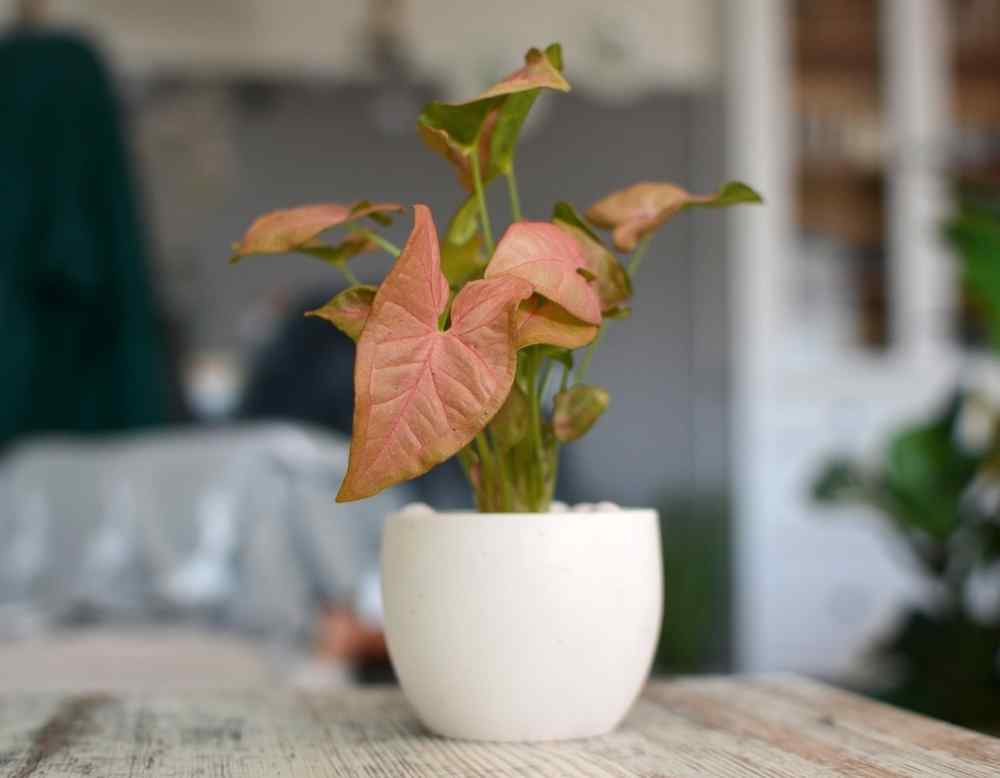
Where Are Pink Plants Commonly Found?
Where these plants are found depends on the individual pink plant itself. Some are also rarer than others. Here are some common places to find these pink houseplants.
- Online Plant Stores: The easiest place to find these pink-hued plants is through online stores. Online plant stores offer the most variety of indoor plants as well.
- Retail stores: If you visit your local giant retail store, check out the plant section for any pink varieties.
- Natural Habitats: Some of these plants are grown naturally in rainforests in Africa, South America, and Asia. They thrive on the humidity and partial shade offered by trees.
Do Pink Plants Need More Light?
Pink plants require more indirect light to maintain their pink color. Some of these pink houseplants might even lose their color if they are not getting enough indirect sunlight.
Plants rely on chlorophyll to help them photosynthesize. Chlorophyll makes plants green, so a plant without many green leaves requires a little more light to keep it thriving. This can be easily achieved by allowing the plant to sit in areas with bright indirect light as long as possible.
Where Can I Buy Pink Plants?
Planted Pot is your number one choice for finding the perfect plant companion for your office space or home. We are an inclusive community of plant admirers who seek to make plants more accessible for everyone, anywhere!
Planted Pot is committed to providing the plant community with resources to become the ultimate plant parent. Plants make great gifts, and Planted Pot is the best place to find a special house plant for friends, co-workers, or family members.
Plants provide plenty of beneficial effects outside of being decorations. Let Planted Pot spread that wellness to you with any one of the plants in their inventory.
Final Thoughts – Pink Plants
Pink is known to represent low and affection. What better way to convey that to someone you care about than with pink plants. Pink houseplants are not just fake botanical decorations; they are real plants that are easy to care for while showing off their pink foliage. If you want to see other houseplants, check out Planted Pot!



